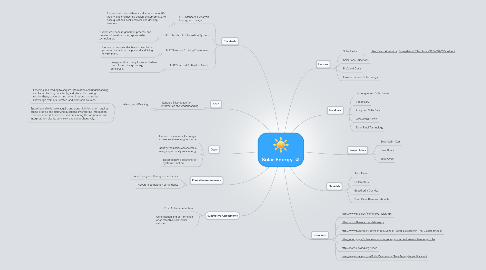
1. Standards
1.1. MST Standard 1: Analysis, Inquiry, and Design
1.1.1. Students will use mathematical analysis, scientific inquiry, and engineering design, as appropriate, to pose questions, seek answers, and develop solutions.
1.2. MST Standard 2: Information Systems
1.2.1. Students will access, generate, process, and transfer information, using appropriate technologies.
1.3. MST Standard 4: Living Environment
1.3.1. Human decisions and activities have had a profound impact on the physical and living environment.
1.4. MST Standard 4: Physical Setting
1.4.1. Energy exists in many forms, and when these forms change energy is conserved.
2. CCLS
2.1. Standard 1: Language for Information and Understanding
2.1.1. Listening and Reading
2.1.1.1. Listening and reading to acquire information and understanding involves collecting data, facts, and ideas; discovering relationships, concepts, and generalizations; and using knowledge from oral, written, and electronic sources.
2.1.1.2. Speaking and writing to acquire and transmit information requires asking probing and clarifying questions, interpreting information from one context to another, and presenting the information and interpretation clearly, concisely, and comprehensively.
3. Goals
3.1. Explore the role of solar energy as a renewable energy resource
3.2. Identify the basics of renewable energy, specifically solar energy
3.3. Describe how a solar energy systems function
4. Formative Assessments
4.1. Student progress throughout activities
4.2. Accurate completion of handouts
5. Summative Assessments
5.1. Post-Activity Reflection
5.2. Construction and performance of an effective solar panel vehicle
6. Resources
6.1. http://www.nrel.gov/learning/re_solar.html
6.2. http://www.thesolarfoundation.org/
6.3. http://www.nyserda.ny.gov/Schools/School-Power-Naturally/In-The-Classroom.aspx
6.4. http://energy.gov/science-innovation/energy-sources/renewable-energy/solar
6.5. http://learn.kidwind.org/teach
6.6. http://www.ameren.com/Solar/Documents/SolarEnergyLessonPlans.pdf
7. Project Ideas
7.1. Solar Sprint Cars
7.2. Solar Boats
7.3. Solar Oven
8. Lessons
8.1. Solar Basics
8.1.1. http://learn.kidwind.org/sites/default/files/Basics%20of%20SOLAR.ppt
